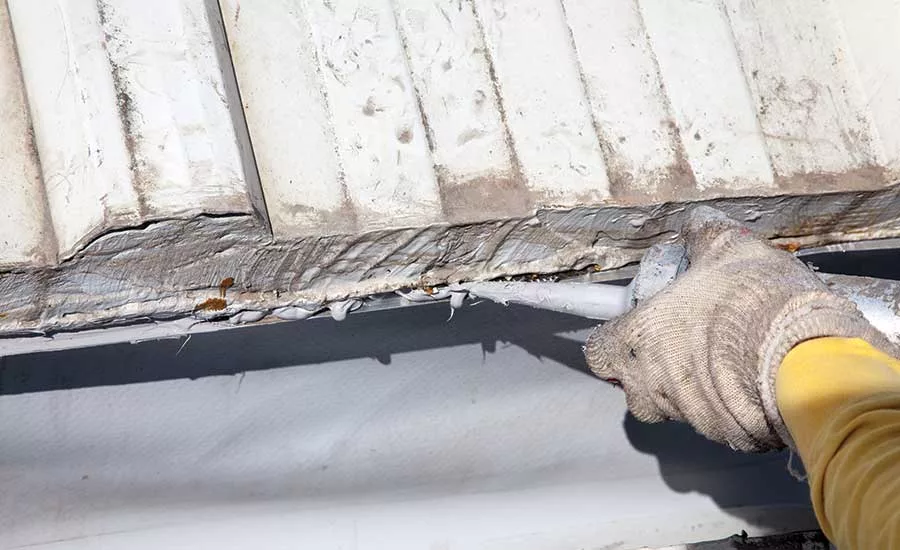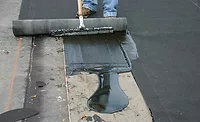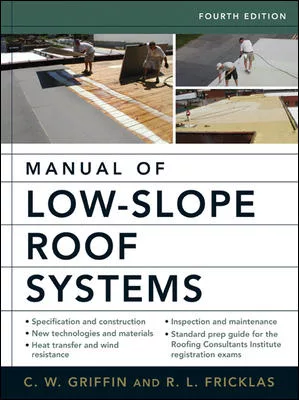Navigating the World of Low-VOC Bonding Adhesives
As a result of restrictions, roofing manufacturers developed low-VOC alternatives to traditional yellow glues.

When I started out in the roofing business almost 40 years ago, selecting the right adhesive for bonding single-ply membranes was pretty easy. That was because there were basically only two types of adhesive available: “yellow glue” to bond the membrane to a substrate and “black glue” to splice the membrane to itself. In reality, either yellow or black glue would work fine to bond a membrane to a roof deck or wall. The only risk involved using the yellow glue to splice the membrane because the yellow adhesive tended to draw moisture into the seam. Traditional yellow glue also was easy to use. It could be applied in temperatures as low as 20°F, and it tended to dry quickly regardless of temperature.
Unfortunately, traditional yellow glue wasn’t necessarily all that good for the environment. The solvents used to make this adhesive tended to contain many Volatile Organic Compounds (VOCs), which in turn tended to react with sunlight to form hazardous Ozone pollution in the atmosphere. As part of efforts to reduce Ozone levels across the United States, many states and cities started to restrict allowable amounts of VOCs used in a wide variety of products, from charcoal fluid to paints, and of course, roofing adhesives. As a result of these restrictions, roofing manufacturers started to develop low-VOC alternatives to the traditional yellow glues.
Today, there are many different adhesive technologies to choose from, but each of these low-VOC alternatives tend to pose new challenges to the roofing contractor accustomed to using single roof adhesive suitable for many different field conditions. Among the types of adhesives available, the following five are probably the most common:
Low-VOC adhesives typically use small amounts of high-VOC solvents with quantities of “exempt” solvents that work like traditional solvents but aren’t considered to contribute to Ozone pollution. These adhesives are typically considered compliant with the Ozone Transport Commission (OTC) Model Rule employed by many states in the Northeast U.S. as well as several other state and local jurisdictions. Many low-VOC adhesives may be applied at colder temperatures, although drying time is frequently extended.
Low-VOC adhesives (1068 Compliant) are a special class of low-VOC adhesives that also comply with a stricter Model Rule 1068 recently enacted by the South Coast Air Quality Management District (SCAQMD) employed by 17 counties in California. Essentially, the model rule has removed the exemption for several solvents that are currently allowed under the OTC Model Rule. By restricting the types of solvents allowed, 1068-compliant adhesives usually must be installed at higher temperatures and may require extended drying times.
Solvent-free adhesives use a modified silane formulation similar to the technology used in silicone roof coatings, which contain few VOCs. Solvent-free adhesives feature high coverage rates and fast application times because the membrane can be “wet laid” into a single layer of the adhesive. However, the minimum application temperature for solvent-free adhesive is higher than the minimum temperature required for high-VOC products.
Water-Based Adhesives use formulations similar to acrylic or latex-based paints, which contain few VOCs. Water-based adhesives feature higher coverage rates than solvent-based adhesives, but the application temperatures tend to be higher and the dry times tend to be longer. Some water-based adhesives utilize a unique color change feature to indicate when the adhesive is ready for bonding.
The following chart provides a summary of these low-VOC alternatives as well as the more traditional commonly-used high-VOC adhesives.
As you can see in the chart, there’s considerable variation in VOC content, coverage rates, and minimum application temperatures. Also, your choices may be restricted depending on state and local regulations.
In addition to this brief comparison of low-VOC adhesive choices, the following guideline may be helpful:
Check the Regulations. Be sure you know and understand any local regulations that restrict the use of VOCs in adhesives.
Read the Specification. Carefully read the project specifications to determine if VOC limits are included that may be even more restrictive than local regulations.
Know the Difference. Before using any adhesive for the first time, be sure to understand limitations in temperature, dry time and coverage rates.
Practice, Practice, Practice. Don’t use a new adhesive on a jobsite without conducting a few practice trials back in the yard.
Looking for a reprint of this article?
From high-res PDFs to custom plaques, order your copy today!





